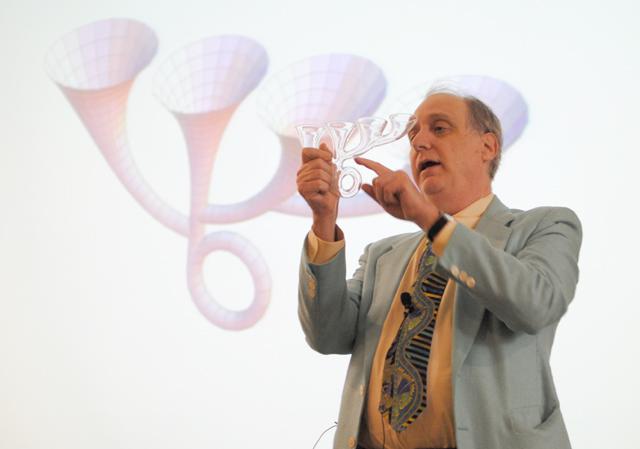We’ve all thought about it.
Whether to undo a mistake or change an answer on a test, time travel is a topic that remains nothing but a fantasy for most people.
But to J. Richard Gott, it’s a serious possibility.
Gott, a writer and professor at Princeton, believes time travel, specifically to the future, is possible and proven by Einstein’s Theory of Relativity. In a lecture at the University last Friday, Gott explained how time travel is possible if one were to travel as close as possible to the speed of light in space and then return back to Earth. The traveler will have aged very slowly, while the Earth will have aged at a normal rate.
Although we do not have the technology to travel like this, humans have traveled forward in time. Sergei Krikalev, a Russian cosmonaut, traveled 1/48 of a second into the future while in space by traveling at a high velocity relative to Earth. This was measured using an atomic clock – one with Krikalev and another on Earth.
Gott said he is confident scientists will develop the technology to make time travel to the future possible, and he also explained his theories of time traveling to the past.
One would have to beat a beam of light from point A to point B by traveling faster than the speed of light, which is impossible with today’s technology. The only way to beat that beam of light is to take a shortcut through a wormhole, a warp drive, or, as Gott believes, a cosmic string. Cosmic strings are segments of space that are twisted in such a way that it is possible to use as a “shortcut” to travel faster than light. Gott says Einstein’s Theory of General Relativity seems to theoretically allow time travel to the past through wormholes and the cosmic string solutions he found.
Although we have not been able to travel to the past, we have been able to “see” into the past. By looking through a large telescope and reflecting a radio wave off Saturn’s ring, scientists were able to view an image of the planet form 2.4 hours ago.
Travel to the past also has limits, according to Gott. A person would be unable to travel farther back into the past than when they made the time machine. Gott also presented an explanation to the grandfather paradox – what happens if a time traveler goes back in time and shoots his own grandfather. According to Gott, the action of traveling back in time spawns a parallel universe. In this universe, the time traveler began existing after the time travel, and his existence is no longer dependent on his grandfather. Therefore, in the alternate universe, there is the time traveler and a dead grandfather.
Gott’s lecture was the opening presentation for a two-day time travel conference, hosted by the Department of Philosophy and Religious Studies, and organized by John Carroll, a professor of philosophy. The University, the Philosophy and Religious Studies Department, and the University Honors Program funded the event.
Alt box: Space time (accompanying graphic)
Space-time is considered to be 4-dimentional — length, width, depth and time. According to Einstein’s Theory of Relativity, the speed of light is constant. In the presence of an extreme distortion, such as a wormhole, it is possible to travel through space faster than light and move through the time dimension.
/source: Gott








